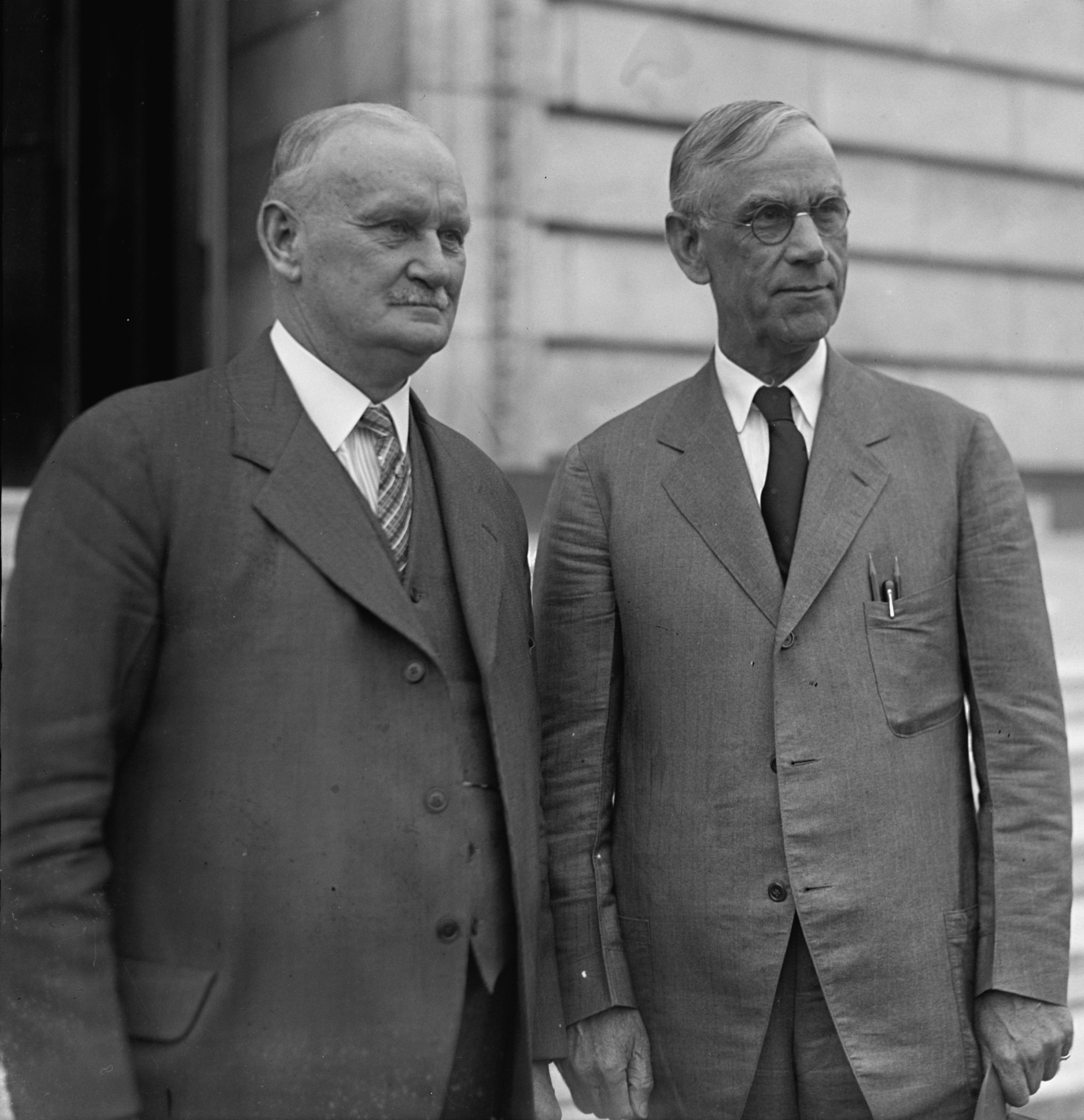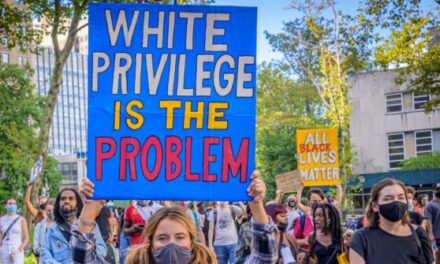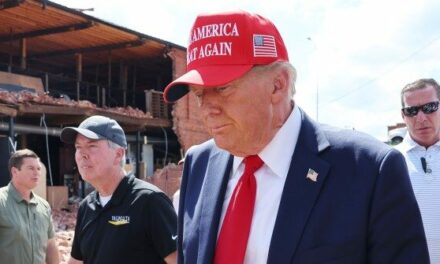We support our Publishers and Content Creators. You can view this story on their website by CLICKING HERE.
The Tariff Panic Returns
Donald Trump’s recent tariff proposals—10 percent on all imports, potentially rising to 20 percent, and 60 percent on Chinese goods—have set off an all-too-familiar panic among the trade globalists.
In the fevered imaginations of Trump’s policies, tariffs threaten to bring global trade to its knees, provoke retaliatory measures, and hit consumers with higher prices. The ghost of the Smoot-Hawley Tariff Act of 1930 looms large, ready to serve as the ultimate cautionary tale. This narrative deserves a complete rejection, and it is essential to confront the realities behind these unfounded claims.
Tariffs: The Bogeyman of Economics
Critics assert that tariffs will lead to inevitable inflation for consumers, but the dynamics of modern economics are far more complex. A study conducted during the 2018-2019 U.S.-China trade dispute by the National Bureau of Economic Research (NBER) found that many companies absorbed the costs of tariffs rather than passing them on to consumers.
In competitive industries, where profit margins are already thin, firms often prefer to absorb costs rather than risk losing market share. When faced with higher prices, consumers will look for alternatives, further incentivizing companies to maintain reasonable pricing.
Smoot-Hawley: A Cautionary Tale or a Misunderstood Chapter?
The dire warnings about the lessons of Smoot-Hawley follow a well-known script. Critics often invoke this historical precedent as a warning against tariffs, but by the time Smoot-Hawley was enacted in June 1930, the U.S. economy was already grappling with the fallout from the 1929 stock market crash.
The more significant factor was the Federal Reserve’s decision to tighten the money supply, which precipitated a deflationary spiral. In their seminal work, A Monetary History of the United States, Milton Friedman and Anna Schwartz argue that it was the Fed’s failure to manage the money supply—leading to a severe contraction during a critical period—that exacerbated the Great Depression, not the implementation of Smoot-Hawley.
Moreover, while Smoot-Hawley did raise duties on thousands of imported goods—mostly agricultural—its overall effect on U.S. imports was modest. According to economist Douglas Irwin, the legislation likely reduced U.S. imports by only one or two percent. The more significant decline in global trade during this period was largely driven by collapsing demand due to deflation and economic mismanagement. Notably, the Great Depression years following Smoot-Hawley were not characterized by high prices, underscoring how much larger a role various economic forces played compared to tariffs.

Rep. Willis C. Hawley (R-OR) (left) and Sen. Reed Smoot (R-UT) in April 1929, shortly before the Smoot–Hawley Tariff Act passed the House of Representatives. (National Photo Company via U.S. Library of Congress)
The Retaliation Trade War Myth
Regarding claims of retaliatory tariffs, it is important to recognize that many countries would have imposed these tariffs regardless of U.S. policy. Scholars such as Peter Temin have observed that global trade was already in jeopardy due to deeper economic issues. Following World War I, Europe’s economy faced significant challenges, burdened by massive debts and the punitive reparations imposed on Germany. The Treaty of Versailles had effectively destabilized Germany’s economy, leading to hyperinflation, while Britain and France struggled to manage their war debts. The world was already poised for an economic collapse long before the enactment of Smoot-Hawley.
Many nations did not retaliate against Smoot-Hawley, and the tariffs that were implemented in supposed retaliation would likely have been enacted regardless. The notion that the trade policies of other countries were formed in reaction to U.S. tariffs lacks historical evidence to support it and is likely just the product of a weirdly chauvinistic worldview in which no one else has agency but the United States.
In Canada, for example, the agricultural sector faced mounting challenges during the Great Depression. Canadian policymakers were compelled to protect their farmers, leading to the imposition of tariffs on American goods that would have happened even if Smoot-Hawley had not passed.
Similarly, the United Kingdom‘s response was shaped by its own economic struggles. Facing high unemployment and declining industries, the British government was under significant pressure to support domestic production. The rise of protectionist sentiment within the country meant that increased tariffs on imports were a likely policy choice. British officials recognized that without protective measures, their economy would suffer further, regardless of U.S. trade policies.
France also exhibited a protectionist stance during this period. The nation’s agricultural sector, which was already struggling, pushed for increased tariffs to shield it from foreign competition. The economic instability following World War I, coupled with the challenges of the Great Depression, meant that French policymakers were inclined to implement tariffs to protect domestic interests, independent of U.S. actions.
Germany’s economic context further illustrates this point. The Weimar Republic was grappling with hyperinflation and severe economic instability, fostering a nationalistic sentiment that called for protective measures. As the global economic crisis deepened, Germany’s inclination to raise tariffs was driven more by domestic economic necessity than by any direct reaction to U.S. policies.
In Australia, the shift toward protectionism had already begun in the 1920s, with tariffs serving as a means to support local agriculture and manufacturing. The economic pressures of the Great Depression only intensified these efforts, as Australian leaders recognized the need to protect their economy from foreign competition.
The truth is that countries were reacting to their own economic crises rather than solely responding to U.S. policy decisions. The historical reality is that the collapse in trade during the 1930s was driven by far more than tariffs—it was a result of monetary contraction, global debt, and deflation, and tariffs were merely a sideshow.
Trump’s tariff proposals—whether 10, 20, or even 60 percent—are necessary responses to the challenges of our time. They aim to correct trade imbalances and protect American industries from unfair practices that have persisted for too long. Smoot-Hawley didn’t cause the Great Depression, and Trump’s tariffs won’t cause a new one. They represent a vital step toward restoring fairness to global trade and protecting American economic interests for the long haul.
The stakes extend far beyond mere historical comparisons. In an era where countries like China continue to exploit weaknesses in the global trading system, tariffs are not just a protective measure. They are a strategic necessity. America must embrace the tools at its disposal to safeguard its economic future.

 Conservative
Conservative  Search
Search Trending
Trending Current News
Current News 







